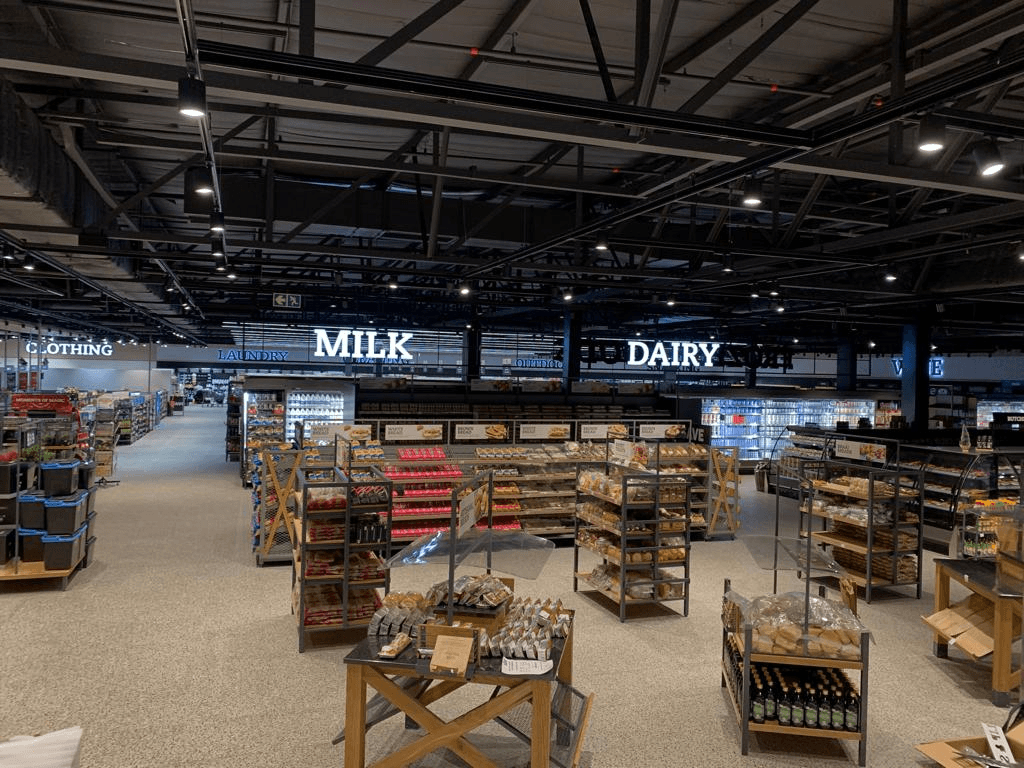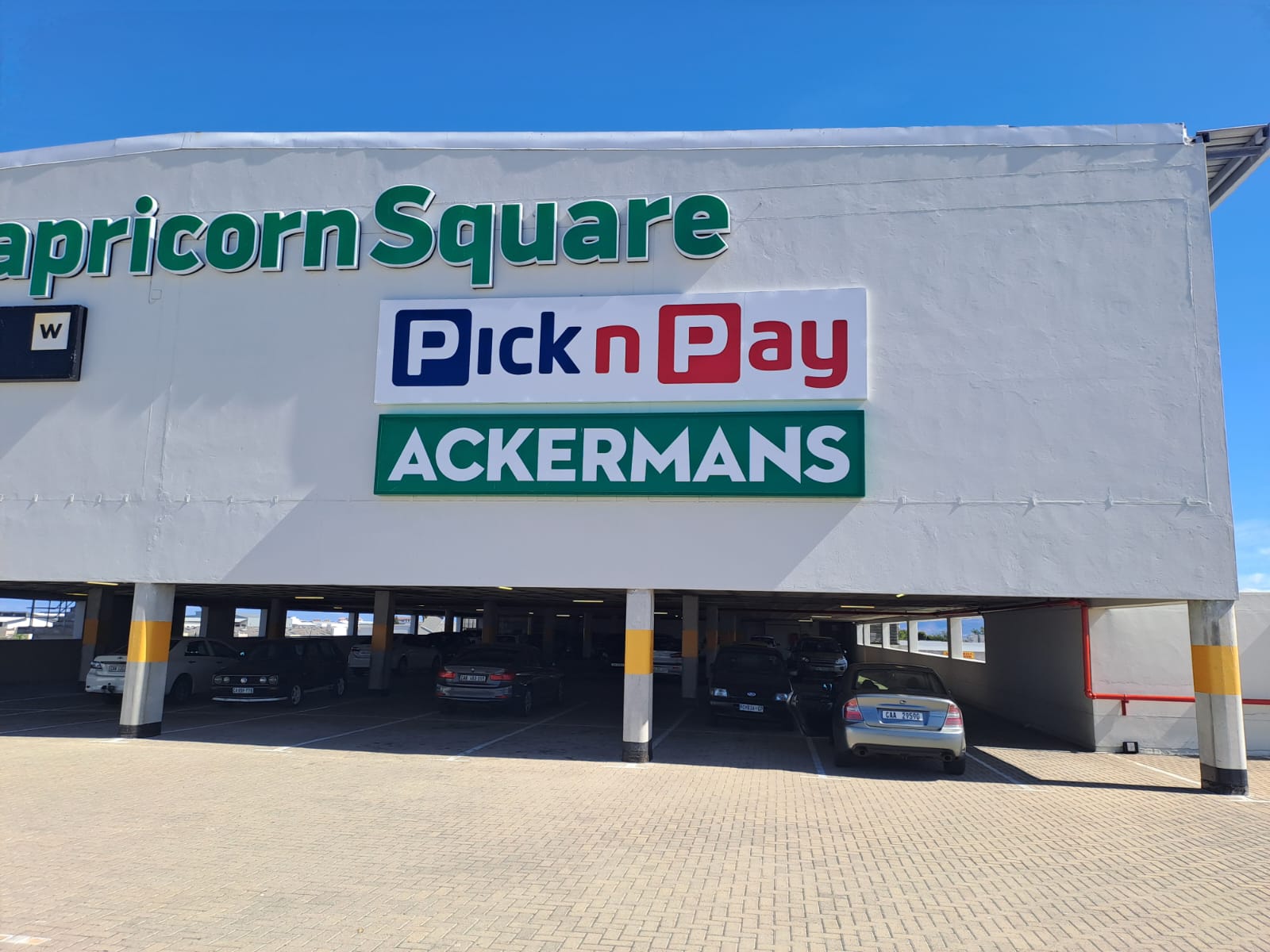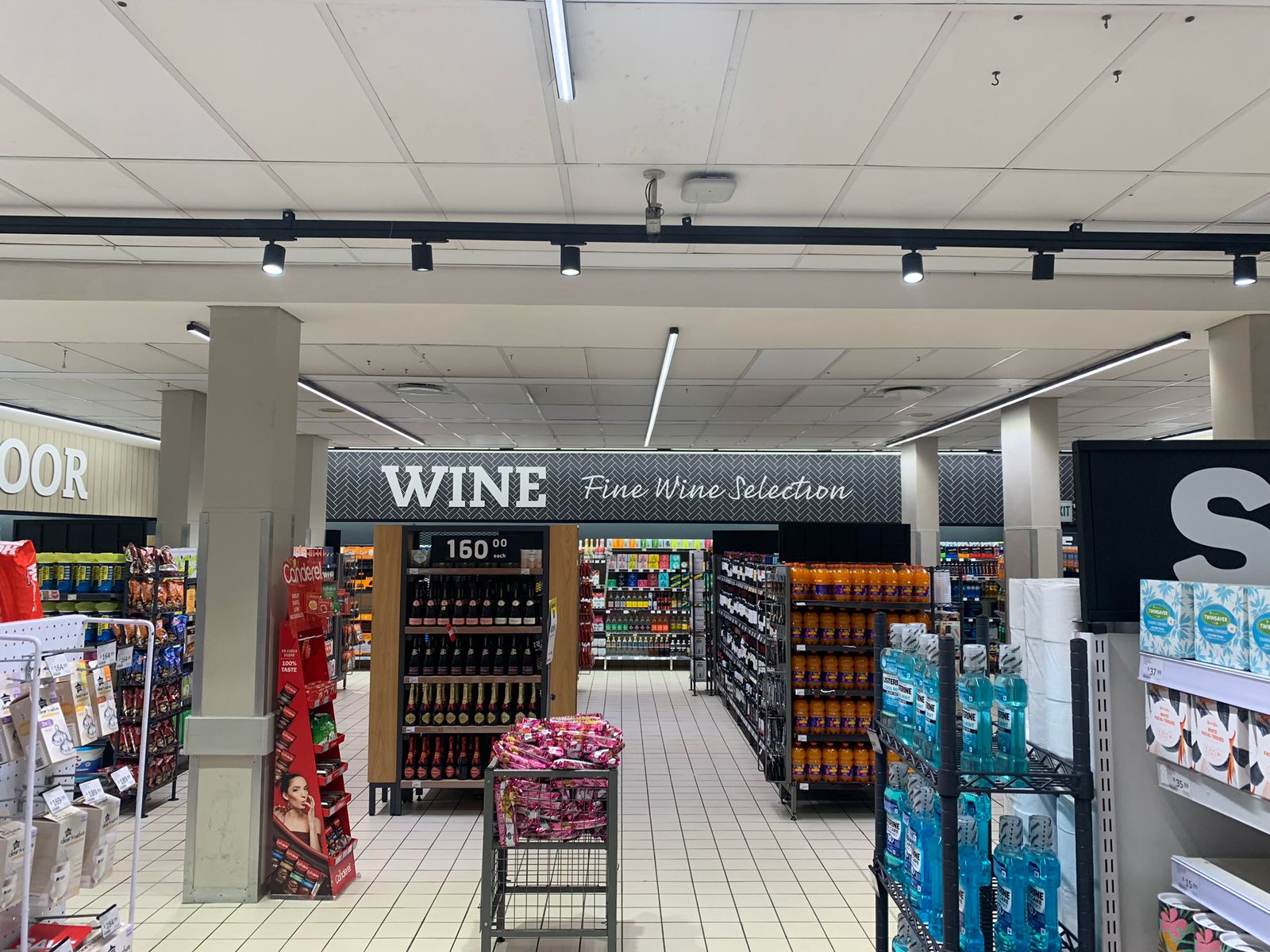Category
Project Summary
1. What was the primary goal of the Pick n Pay Sunningdale signage installation project?
The primary goal was to execute the interior signage for the Pick n Pay Sunningdale Superstore, aligning with their new "Store of the Future" concept. This involved creating complex signage elements that enhanced the store's aesthetic while providing clear navigation for customers.
2. What were the key challenges faced during the installation phase?
The installation phase presented several challenges, including working at night while the store was operational, extensive wall preparation due to the store's old condition, and navigating a cramped workspace alongside multiple other teams. These factors required effective coordination and problem-solving.
3. How long did the entire signage installation project take?
The project was completed within six weeks, with the installation phase itself taking approximately three weeks. This tight timeline necessitated careful planning and collaboration among team members.
4. What valuable lessons did you learn from this project?
I learned the importance of discipline, teamwork, and attention to detail in the signage industry. I gained insights into how retail signage enhances the shopping experience and conveys a retailer's corporate identity. Additionally, I developed my project management skills and became more adept at adapting to new specifications and challenges.
The Pick n Pay Sunningdale signage installation marked my first major project management experience in signage. Pick n Pay was refurbishing their Sunningdale Superstore to align with their new "Store of the Future" concept, and we were responsible for executing the interior signage portion.
This was Romano Signs’ first "Store of the Future" project, and the signage specifications were more complex than any Pick n Pay store we had tackled before. With only six weeks to complete the task, the pressure was on to deliver quality work within the tight timeframe.
We spent hours in meetings with the Pick n Pay store development team, carefully noting their new requirements for the "Store of the Future" concept. The updated store design was stunning, and we were determined to bring their vision to life.
One of the key changes was the increased use of illuminated signage, which meant we had to raise the bulkheads to accommodate additional wiring. The aisle indicators and fridge category letters were redesigned, and new vinyl decals were introduced for the butchery prowl, along with foam PVC (FPVC) cutouts for the bakery.
A few other elements were also updated, requiring further planning. These included the new health and beauty cutout lettersets, the "roller-script" cutout lettersets accompanying the illuminated primary signage, and the trading hours vinyl.
Time was of the essence, so we quickly mobilized. I conducted a site survey with key team members, gathering all the necessary measurements and details to bring back to the factory. This information allowed our technical team to begin designing the signage, ensuring every element would fit the store's specifications perfectly.
We also pre-ordered all the required materials, making sure that when the time came for manufacturing, there would be no delays due to supply shortages.
Throughout this phase, we worked closely with the Pick n Pay store development team to align our progress with their vision. Both sides were deeply committed to making this project a success, and it showed in every detail.
The production team meticulously crafted each signage element, and as the deadline loomed closer, it was all hands on deck. At times, we had to implement night shifts to ensure we stayed on track and met our deadlines.
The fabrication team concentrated on manufacturing the illuminated letter backings and ACM cladding, ensuring each piece was produced to exact specifications. Meanwhile, the vinyl team applied graphics to over 45 signage components, paying careful attention to the smallest details to ensure consistency. The paint team was equally committed, ensuring that each sign had the perfect finish, bringing the client’s vision to life.
Once all the signage elements were completed, the team assembled and packed them in dispatch, ready to be shipped to the site.
This phase proved to be the most challenging. Firstly, we had to work at night since the store remained operational during the day. Secondly, the old store was in desperate need of a revamp, requiring extensive wall preparation for the bulkhead cladding and electrical work. Thirdly, we had to navigate working alongside various other teams, including building, tiling, painting, electrical, refrigeration, air conditioning, and the Pick n Pay nightshift. The workspace was cramped, to say the least.
While we faced a few hiccups along the way, we overcame them by applying a collaborative, multi-perspective problem-solving approach. The installation took about three weeks to complete, and those late nights were full of valuable lessons. Personally, I spent between 100 to 120 hours on-site during this phase, including three memorable all-nighters with my team members.
We met the deadline and walked out of the store on the morning of the launch with smiles on our faces. The team had pulled it off, and the client was happy. Another successful project in the books.
This job tested me in many ways, requiring significant discipline and prompting me to step up as a newly appointed project manager. I learned what it takes to work in the signage industry, from early mornings to late nights, collaborating with a large team, and adapting to a new corporate identity specification. The Pick n Pay Sunningdale project taught me invaluable lessons, and I grew tremendously as a professional during these six weeks.
One key lesson was understanding how retail signage operates—something that isn’t covered in a digital design degree. Effective retail signage must guide customers clearly to their desired locations, enhancing their shopping experience. Additionally, it needs to convey the retailer's corporate identity and customer value proposition efficiently, effectively, and impactfully. This specific store had over 400 line items, requiring meticulous attention to detail to ensure all signs were installed in the correct locations.
I am extremely proud of this project and grateful for the opportunity to contribute to it.












